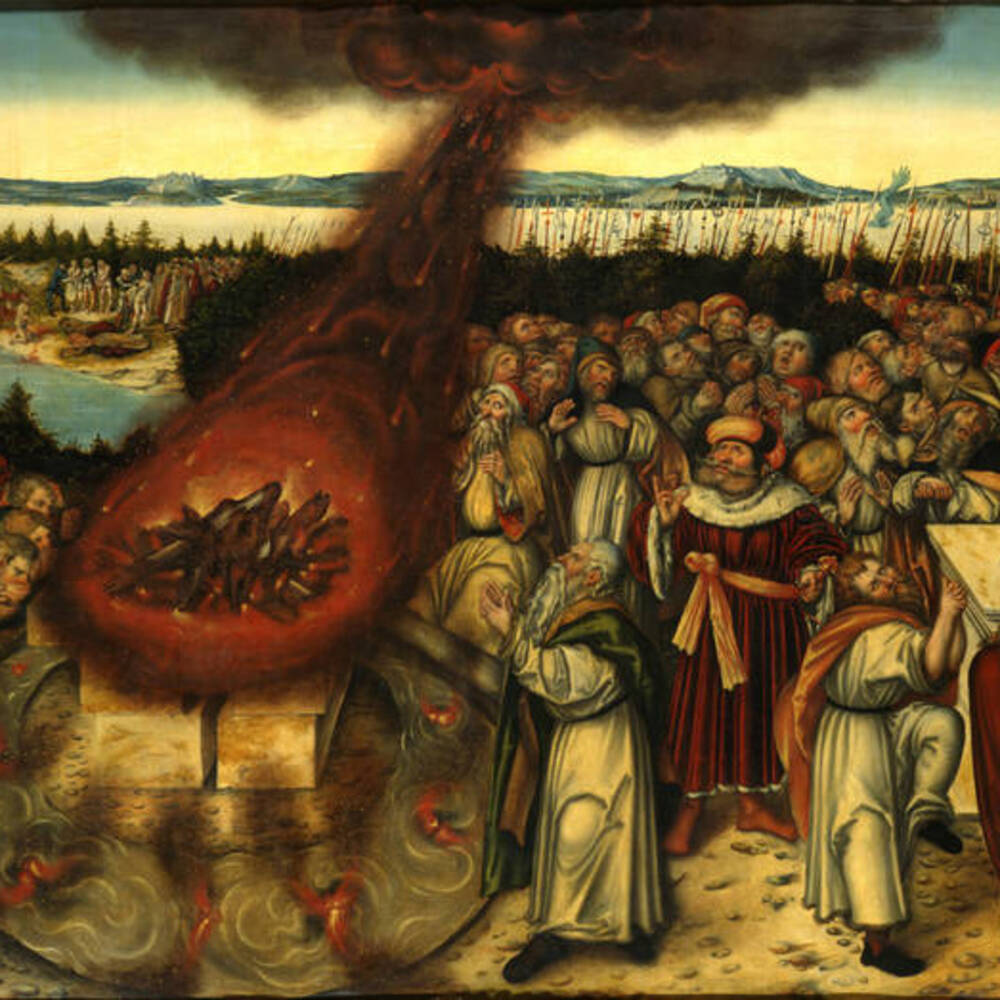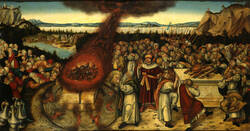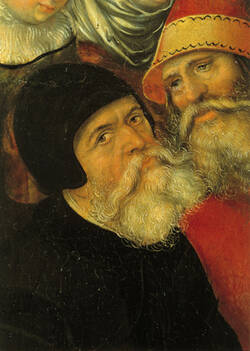According to the Old Testament, the prophet Elijah and King Ahab, who worshipped Baal, held a contest to identify the true God. They each set up an altar and prayed for fire from heaven; whoever’s deity was first to burn the sacrifice on it was the true God. While they were still praying for divine assistance, Elijah’s sacrifice ignited. Thereupon, the priests of Baal were slain. This painting illustrates the radicality of the conflict between Catholics and the adherents of Luther’s new doctrine.
Further Media



Although we do not know for certain who commissioned this painting, it was most likely Johann Friedrich, the Elector of Saxony, for his palace chapel in the town of Torgau. The work was ordered from the Wittenberg workshop of Lucas Cranach, father and son – the leading artists producing works supporting Lutheran Protestantism in the sixteenth century.
The Torgau palace chapel was the first Lutheran church to be built in Germany. Martin Luther, the initiator of the Protestant Reformation, may even have suggested a suitably programmatic picture for this chapel himself – and this work does reference Luther, since his supporters regarded him as Elijah, the prophet representing the true faith. So for Luther, the priests of Baal were the Catholics, and – if necessary – they would also be fought in battle. And that’s a crucial point here. After all, we are not only shown who venerates the ‘true’ God, but also how soldiers are advancing from a little pine wood to capture the idolaters and – further to the left – brutally murder them at a shallow stream.
One of Luther’s important sayings was that ‘soldiers too will go to heaven’ – which thus overruled the fifth commandment ‘You shall not kill’.
- Location & Dating
- 1545
- Material & Technique
- Oil on limewood panel
- Dimenions
- 127,5 x 242 cm
- Museum
- Gemäldegalerie Alte Meister
- Inventory number
- Gal.-Nr. 1941